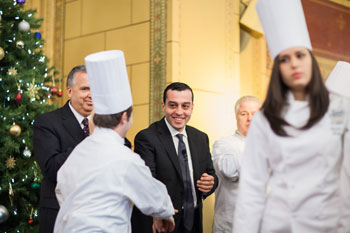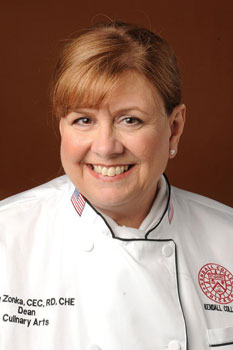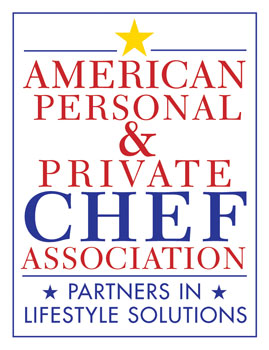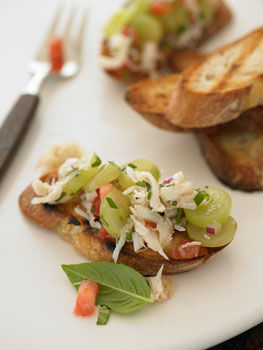Call for Entries! The Art Institutes Best Teen Chef and Culinary Scholarship Competitions, Deadline Is Jan. 24, 2013
The International Culinary Schools at The Art Institutes announces a call for entries in two competitions: The Art Institutes Best Teen Chef Competition for high-school seniors and The Art Institutes Culinary Scholarship Competition for high-school graduates.
Entrants must submit an entry/release form, a favorite recipe and an essay, as well as transcripts. The deadline for entry is Thursday, Jan. 24, 2013. To enter and view the competition rules, visit www.aicompetitions.com/culinary2013.
The Art Institutes Best Teen Chef Competition, now in its 14th year, is an opportunity for high-school seniors in the United States and Canada interested in pursuing a culinary career to experience the excitement and discipline of the industry. For the second year, the Culinary Scholarship Competition offers high-school graduates the opportunity to compete against their peers, as well.
Selected finalists will participate in a cook-off competition at each participating Art Institutes school on March 2, 2013, judged by professional chefs and culinary faculty. Entrants selected to participate in the cook-off competition receive recipes in advance and have an opportunity to take part in a pre-competition coaching session.
The first-place winner in the high-school-senior competition at each participating Art Institutes school will earn a $4,000 tuition scholarship. The second-place winner at each participating Art Institutes school will earn a $1,000 scholarship. The first-place winner in the high-school-graduate competition at each participating Art Institutes school will earn a $1,500 scholarship.

 Eli Kaimeh, chef de cuisine at the world-renowned restaurant Per Se in New York City, returned to his alma mater to deliver the commencement address at The Culinary Institute of America (CIA) on Dec. 20, 2012. He spoke to graduates at the college's Hyde Park, N.Y., campus about the importance of respecting the food world and each other.
Eli Kaimeh, chef de cuisine at the world-renowned restaurant Per Se in New York City, returned to his alma mater to deliver the commencement address at The Culinary Institute of America (CIA) on Dec. 20, 2012. He spoke to graduates at the college's Hyde Park, N.Y., campus about the importance of respecting the food world and each other. An audio recording of a presentation on sous-vide cooking by Renee Zonka, RD, CEC, CHE, dean of Kendall’s School of Culinary Arts, is available by
An audio recording of a presentation on sous-vide cooking by Renee Zonka, RD, CEC, CHE, dean of Kendall’s School of Culinary Arts, is available by  The American Personal & Private Chef Association (APPCA) based in San Diego, Calif., recently announced official endorsement of the Escoffier Online International Culinary Academy, which launched last June by Hoffman Estates, Ill.-based Triumph Higher Education Group at
The American Personal & Private Chef Association (APPCA) based in San Diego, Calif., recently announced official endorsement of the Escoffier Online International Culinary Academy, which launched last June by Hoffman Estates, Ill.-based Triumph Higher Education Group at  Physical structure and location are no longer as important as the ability to promote a good food product through both traditional and innovative means. Beyond pop-up restaurants, touch-screen ordering and food trucks, what’s next on the horizon?
Physical structure and location are no longer as important as the ability to promote a good food product through both traditional and innovative means. Beyond pop-up restaurants, touch-screen ordering and food trucks, what’s next on the horizon? Here are five trends and 10 accompanying flavor combinations (farro, blackberry and clove, anyone?) predicted to catalyze menu innovation this year.
Here are five trends and 10 accompanying flavor combinations (farro, blackberry and clove, anyone?) predicted to catalyze menu innovation this year.
 This year, mixers will matter and whiskeys will wow. Also, hard ciders go up a notch, and expect the Americanized version of the German Biergarten to blossom.
This year, mixers will matter and whiskeys will wow. Also, hard ciders go up a notch, and expect the Americanized version of the German Biergarten to blossom. According to Mintel research, turkey products report stronger growth than chicken, partly due to increasing interest in heritage breeds.
According to Mintel research, turkey products report stronger growth than chicken, partly due to increasing interest in heritage breeds.